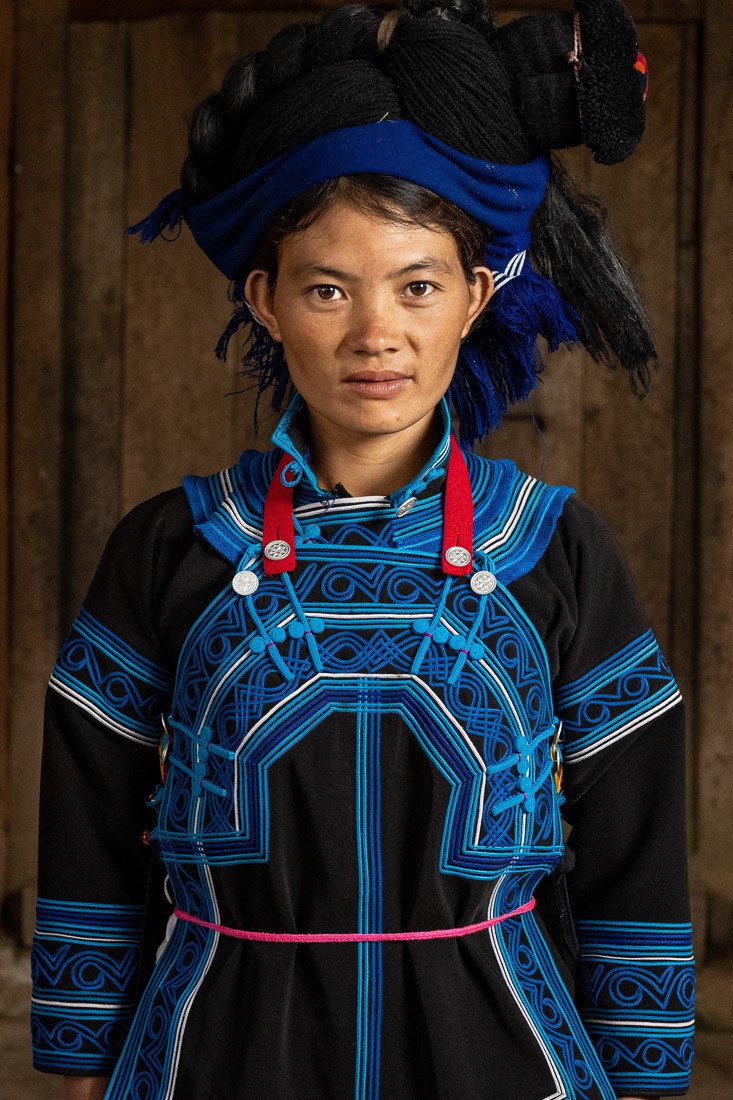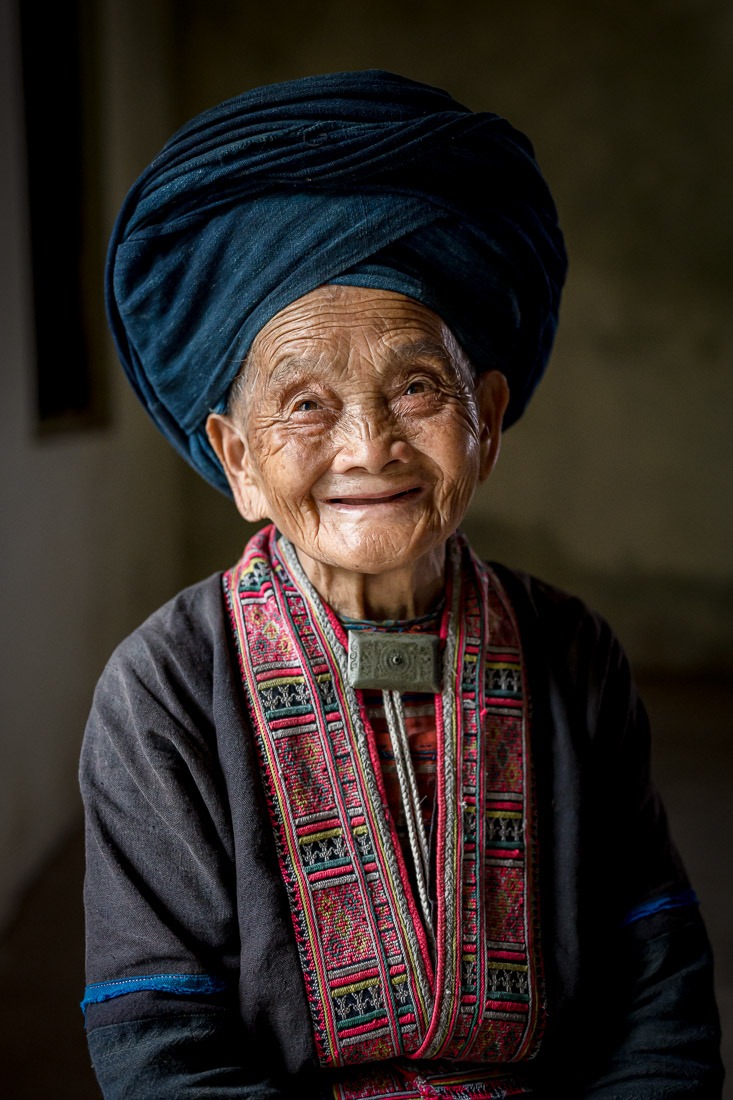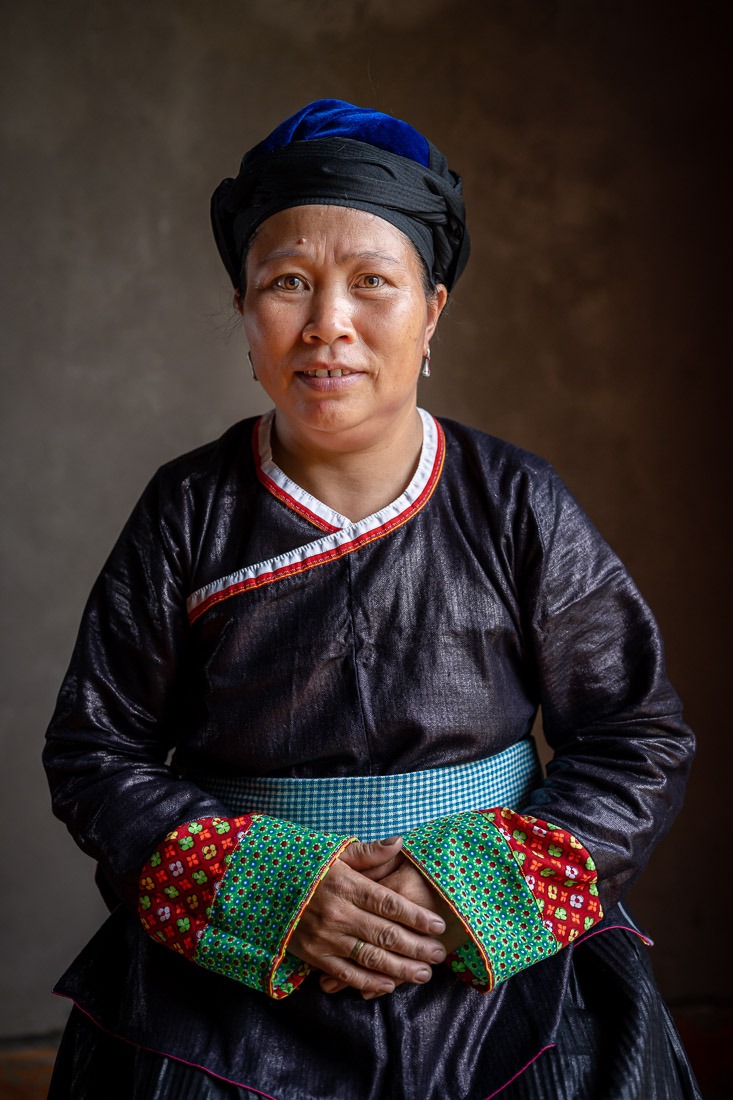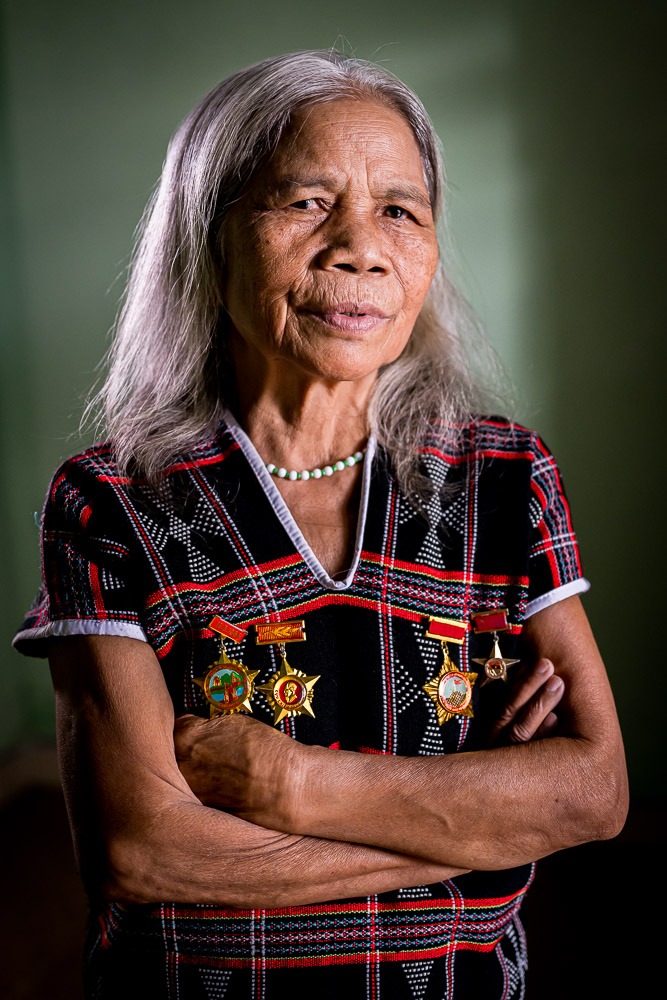Bê, Cống Ethnic Group — North Vietnam
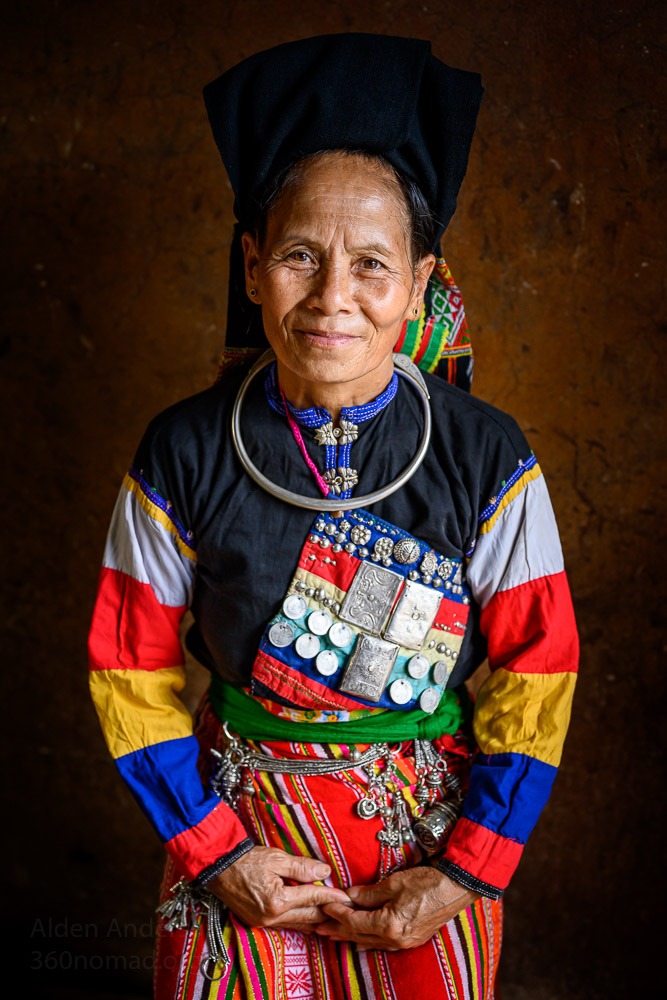
Bê, in Her Traditional Clothes, Cống Ethnic Group
“This whole shirt was sewn by hand. It is very old, about 60 or 70 years old; made by my mother-in-law. During that time, even if people sold their pigs or chickens, they couldn’t buy it (most people didn’t want to part with it as fabric was rare). Having money didn’t mean that you could buy it. When people die, they have to wear it.”
On Marriage and Communal Living:
If you tie your hair like mine, means you are married. Girls who have not yet married, just tie their hair normally.
“Marriage here is just one husband and one wife. Here the groom has to stay at the bride’s house for at least 1 year (after marriage), some people stay there for 3 or 5 years. After that, they will bring the wife to their house.”
“Normally, daughters will sleep in the corner of the house. In the past, there were many people living in the same house, now they get married and have kids then move out. At that time (in the past), there were 20 people living together (in a large communal house). Each family had their own bedroom divided by a curtain.”
Bê, 62 years old
Cống Ethnic Group
Lai Chau, Vietnam
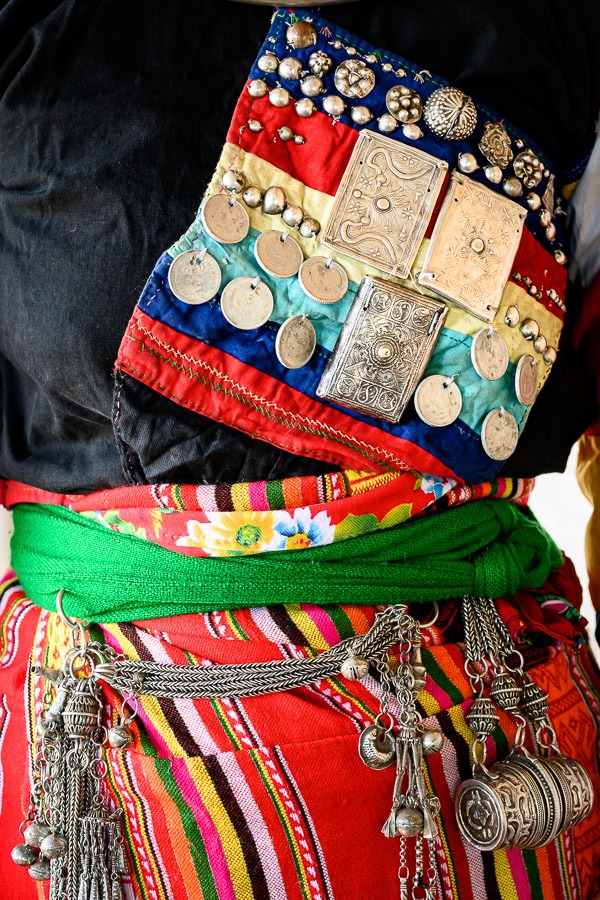
“All of this jewelry is made from real silver and is very old. This part is used for storing betel.” (Bottom Right)
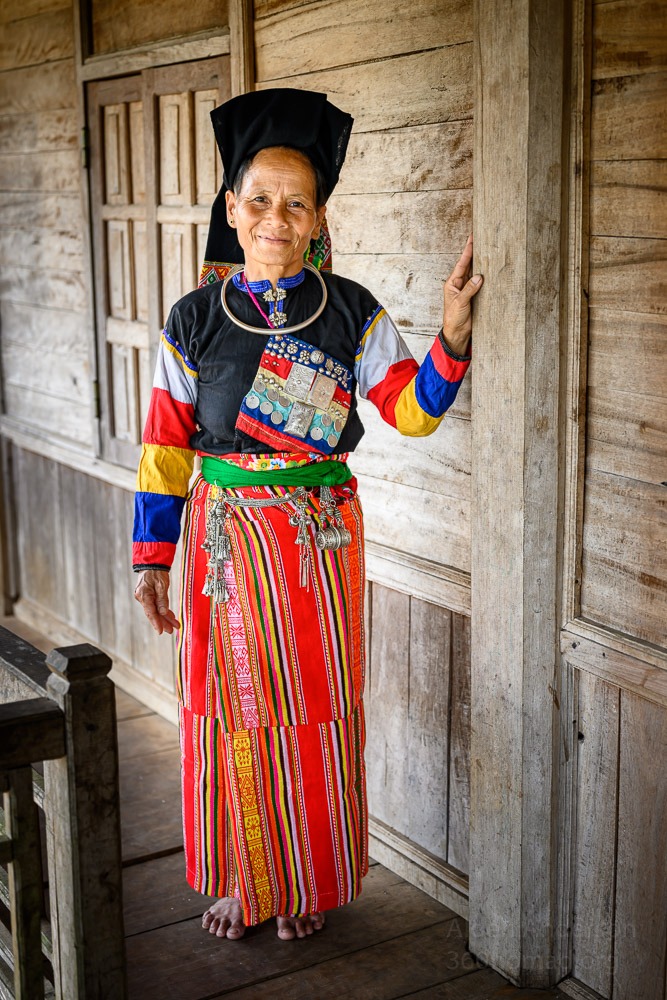
Bê, stands on the wrap-around porch of her traditional stilt-house, proud to wear the clothes of the Cống ethnic group.
Cống Traditional Clothing
We spoke to the local cultural authority before we met Bê and she didn’t know of any traditional clothes that existed still, so we were very fortunate to find Bê with her original traditional clothes.
She told us: “Foreign Tourists came to the village, took pictures of the people and bought their old clothes. It is not easy to make clothes like the old style again. We want to make the shirt like it was in the past, but we don’t have a sample. The old people didn’t understand much, so they sold the clothes to pay for a debt.”
Tibeto-Burman Ethnic Groups
The Tibeto-Burman Ethnic Groups are six different ethnic groups in the remote mountainous regions of Northern Vietnam, all connected through a shared ancestry, language, and culture. They migrated to Vietnam beginning in the 15th Century. Their ancient nomadic lifestyle is reflected in the various pieces of different colored cloth and adornments of nuts, shells, and silver coins on the front of their traditional clothes.
Bê is from one of these ethnic groups, the Cống. She was gracious enough to show Trinh and I her very old traditional shirt and explain many details about her culture:
Discover more stories from ‘Vietnam The People’
